

| Cruise Region : Northern Europe |
| Company : Oceania Cruises |
| Ship : Sirena |
| Journey Start : Mon 11 Aug 2025 |
| Journey End : Sat 04 Oct 2025 |
| Count Nights : 54 nights |
| Day | Date | Port | Arrival | Departure |
|---|---|---|---|---|
| 1 | 11.08 Mon | Reykjavik / Iceland | 06:00 | 18:00 |
| 2 | 12.08 Tue | Isafjordur / Iceland | 08:00 | 16:00 |
| 3 | 13.08 Wed | Day at sea / Sea | ||
| 4 | 14.08 Thu | Day at sea / Sea | ||
| 5 | 15.08 Fri | Nuuk / Greenland | 10:00 | 19:00 |
| 6 | 16.08 Sat | Paamiut / Greenland | 08:00 | 18:00 |
| 7 | 17.08 Sun | Kakortok / Greenland | 08:00 | 20:00 |
| 8 | 18.08 Mon | Day at sea / Sea | ||
| 9 | 19.08 Tue | Day at sea / Sea | ||
| 10 | 20.08 Wed | Day at sea / Sea | ||
| 11 | 21.08 Thu | Torshavn / Faroe Islands | 07:00 | 17:00 |
| 12 | 22.08 Fri | Scrabster / Scotland | 09:00 | 18:00 |
| 13 | 23.08 Sat | Aberdeen / Great Britain | 07:00 | 18:00 |
| 14 | 24.08 Sun | Edinburgh / Great Britain | 03:30 | |
| 15 | 25.08 Mon | Edinburgh / Great Britain | ||
| 16 | 26.08 Tue | Edinburgh / Great Britain | 20:45 | |
| 17 | 27.08 Wed | Kirkwall / Great Britain | 13:00 | 21:00 |
| 18 | 28.08 Thu | Lerwick / Great Britain | 06:00 | 15:00 |
| 19 | 29.08 Fri | Alesund / Norway | 09:00 | 19:00 |
| 20 | 30.08 Sat | Day at sea / Sea | ||
| 21 | 31.08 Sun | Day at sea / Sea | ||
| 22 | 1.09 Mon | Longir / Svalbard and Jan Mayen | 07:00 | 21:00 |
| 23 | 2.09 Tue | Day at sea / Sea | ||
| 24 | 3.09 Wed | Honninswog / Norway | 08:00 | 18:00 |
| 25 | 4.09 Thu | Alta / Norway | 07:00 | 16:00 |
| 26 | 5.09 Fri | Harstad / Norway | 09:00 | 16:00 |
| 27 | 6.09 Sat | Bodo / Norway | 07:00 | 15:00 |
| 28 | 7.09 Sun | Trondheim / Norway | 11:00 | 19:00 |
| 29 | 8.09 Mon | Måløy | 09:00 | 17:00 |
| 30 | 9.09 Tue | Day at sea / Sea | ||
| 31 | 10.09 Wed | Used | 10:00 | 20:00 |
| 32 | 11.09 Thu | IJmuiden | 07:00 | |
| 33 | 12.09 Fri | IJmuiden | 19:00 | |
| 34 | 13.09 Sat | London / Great Britain | 08:00 | 19:00 |
| 35 | 14.09 Sun | Day at sea / Sea | ||
| 36 | 15.09 Mon | Belfast / Great Britain | 13:00 | 22:00 |
| 37 | 16.09 Tue | Douglas / Maine Island | 07:00 | 20:00 |
| 38 | 17.09 Wed | Dublin / Ireland | 06:00 | 17:00 |
| 39 | 18.09 Thu | Plymouth / Great Britain | 12:00 | 19:00 |
| 40 | 19.09 Fri | Paris / France | 08:45 | 21:00 |
| 41 | 20.09 Sat | Dunkirk / France | 11:00 | 21:00 |
| 42 | 21.09 Sun | Antwerp / Belgium | 09:00 | |
| 43 | 22.09 Mon | Antwerp / Belgium | 19:00 | |
| 44 | 23.09 Tue | Used | 06:00 | 16:00 |
| 45 | 24.09 Wed | Paris / France | 07:00 | 21:00 |
| 46 | 25.09 Thu | Day at sea / Sea | ||
| 47 | 26.09 Fri | Cork / Ireland | 07:00 | 18:00 |
| 48 | 27.09 Sat | Dublin / Ireland | 07:30 | 17:00 |
| 49 | 28.09 Sun | Day at sea / Sea | ||
| 50 | 29.09 Mon | Bordeaux / France | 12:00 | |
| 51 | 30.09 Tue | Bordeaux / France | 12:15 | |
| 51 | 30.09 Tue | Pauillac / France | 15:00 | 19:00 |
| 52 | 1.10 Wed | San Sebastian La Gomera San Sebastian La Gomera / Spain | 09:00 | 19:00 |
| 53 | 2.10 Thu | Gijon / Spain | 08:00 | 18:00 |
| 54 | 3.10 Fri | Day at sea / Sea | ||
| 55 | 4.10 Sat | Lisbon / Portugal | 06:00 | 18:00 |
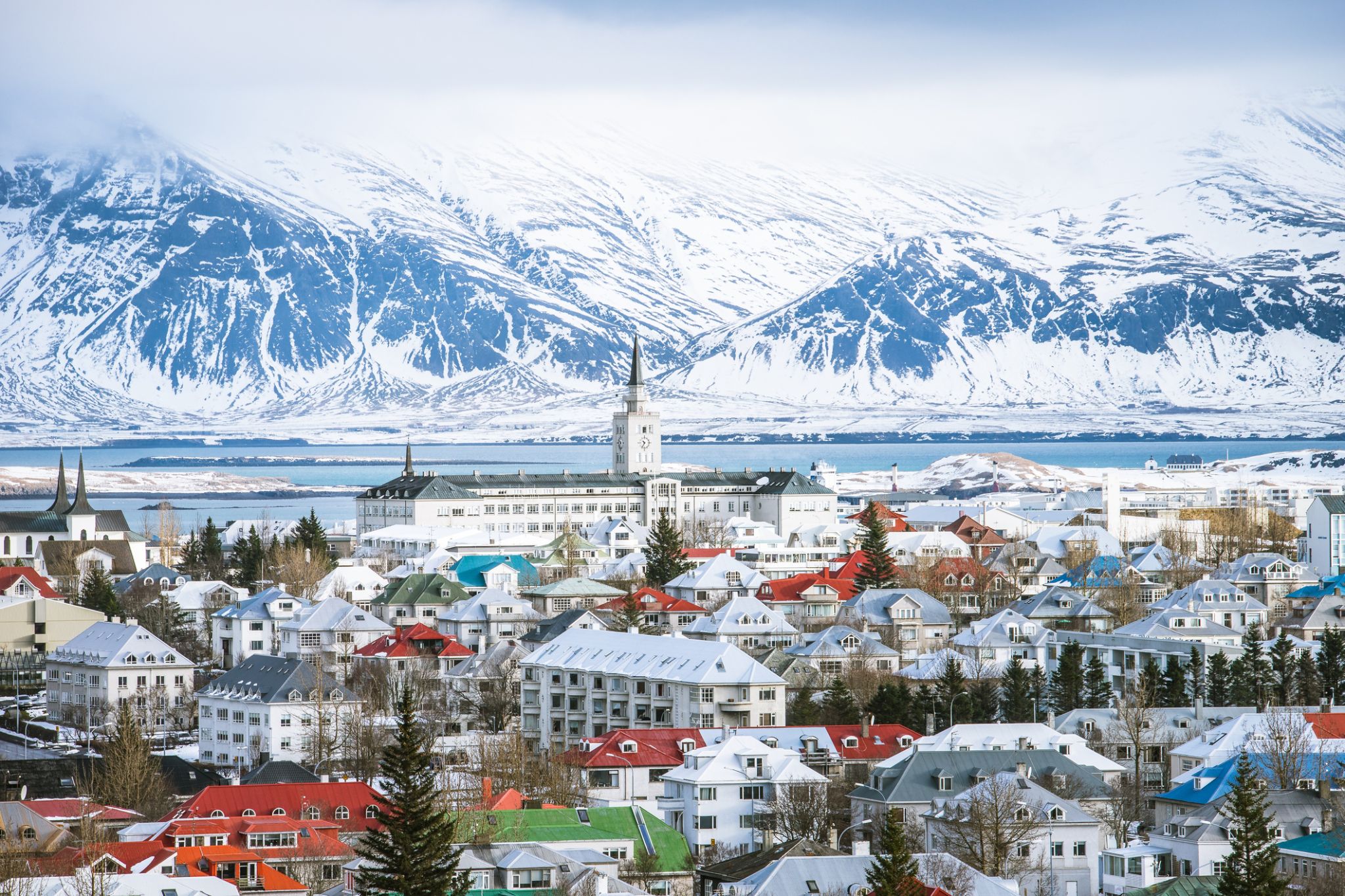
Reykjavík is the capital and largest city of Iceland. It is located in southwestern Iceland, on the southern shore of Faxa Bay. Its latitude is 64°08' N, making it the world's northernmost capital of a sovereign state. With a population of around 123,300 (and over 216,940 in the Capital Region), it is the heart of Iceland's cultural, economic and governmental activity, and is a popular tourist destination.
Reykjavík is believed to be the location of the first permanent settlement in Iceland, which, according to Ingólfr Arnarson, was established in AD 874. Until the 19th century, there was no urban development in the city location. The city was founded in 1786 as an official trading town and grew steadily over the following decades, as it transformed into a regional and later national centre of commerce, population, and governmental activities. It is among the cleanest, greenest, and safest cities in the world.

Isafjörður, meaning ice fjord or fjord of ice, ice in plural genitive) is a town in the northwest of Iceland.
The oldest part of Ísafjörður with the town centre is located on a spit of sand, or eyri, in Skutulsfjörður, a fjord which meets the waters of the larger fjord Ísafjarðardjúp. With a population of about 2,600, Ísafjörður is the largest settlement in the peninsula of Vestfirðir (Westfjords) and the administration centre of the Ísafjarðarbær municipality, which includes – besides Ísafjörður – the nearby villages of Hnífsdalur, Flateyri, Suðureyri, and Þingeyri.


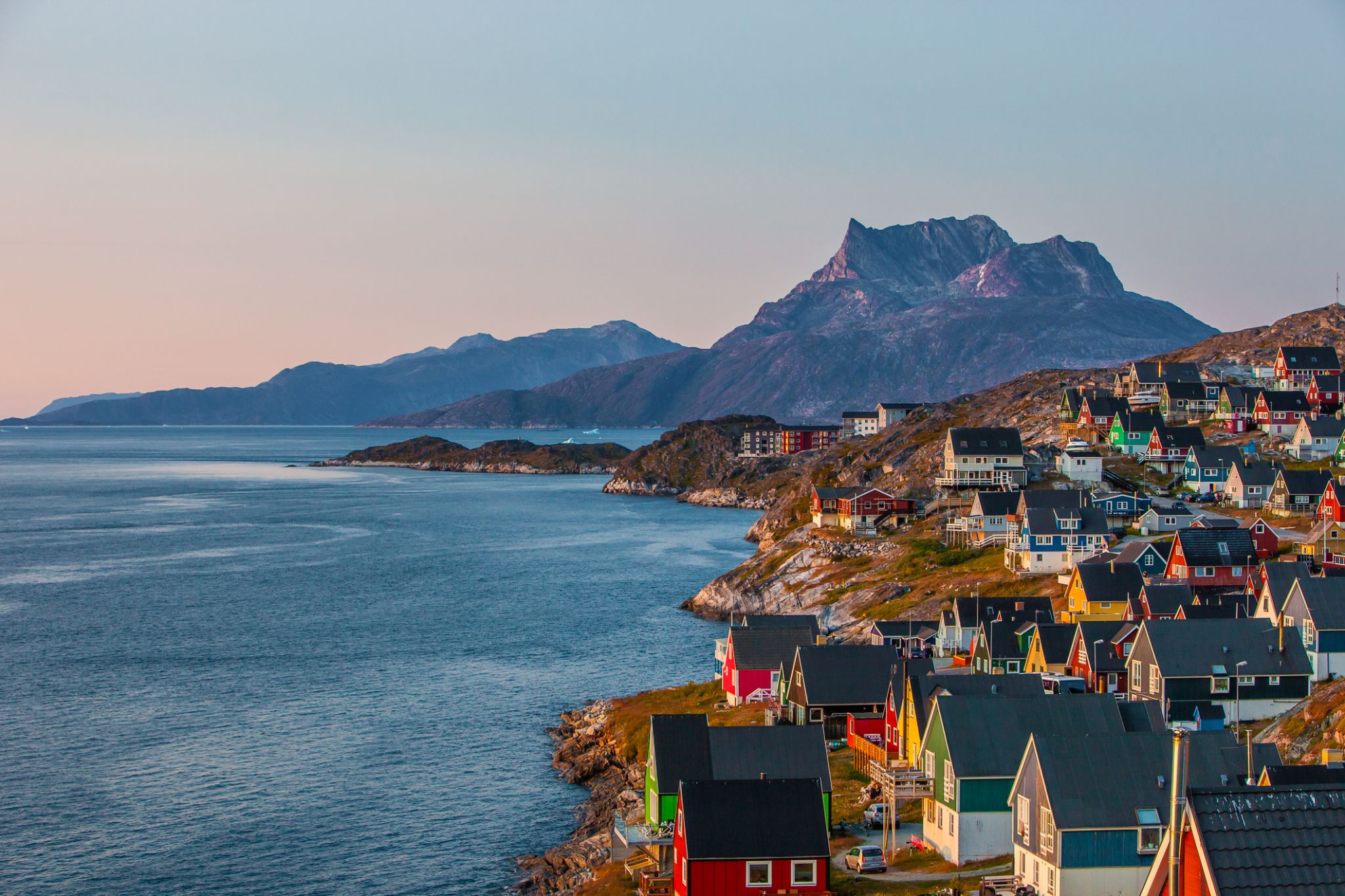

Immerse yourself in the atmosphere of northern nature, where icy waters and picturesque landscapes create a unique scene for every traveler. In this corner of Greenland, in the small town of Paamiut, bright traditions and friendly locals preserve the Inuit culture and a maritime heritage reflected in their fishing lifestyle.
Paamiut is the perfect place for those who want to experience Arctic silence and the grandeur of nature, as well as explore the unique flora and fauna of the region. Here, you can take coastal walks, watch whales and the northern lights, and enjoy fresh seafood prepared by locals with skill and care. This is a quiet and authentic spot offering a true northern adventure.
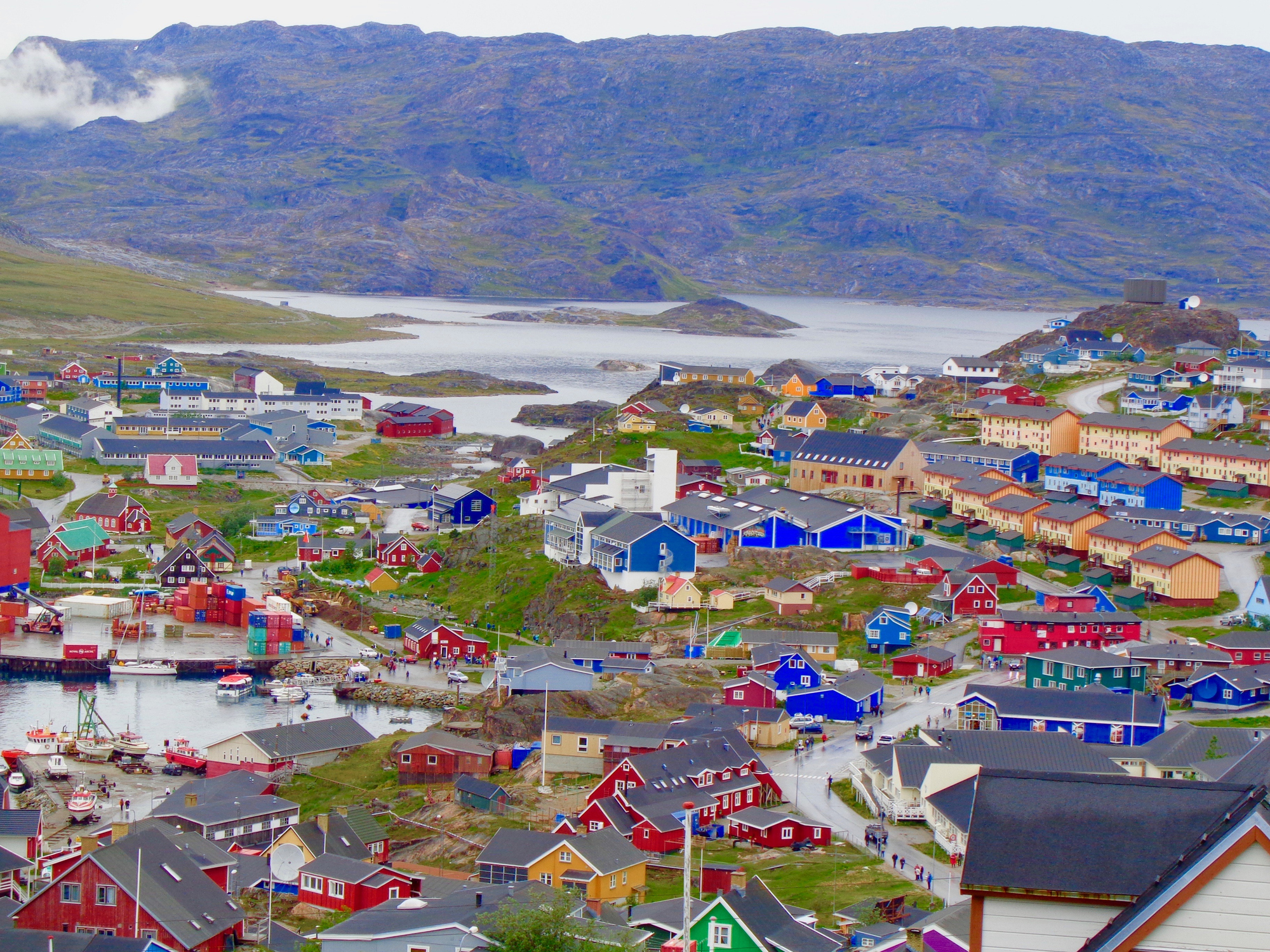
Qaqortoq, formerly Julianehåb, is a town in the Kujalleq municipality in southern Greenland, located near Cape Thorvaldsen. With a population of 3,089 in 2016, it is the most populous town in southern Greenland and the fourth-largest town on the island.



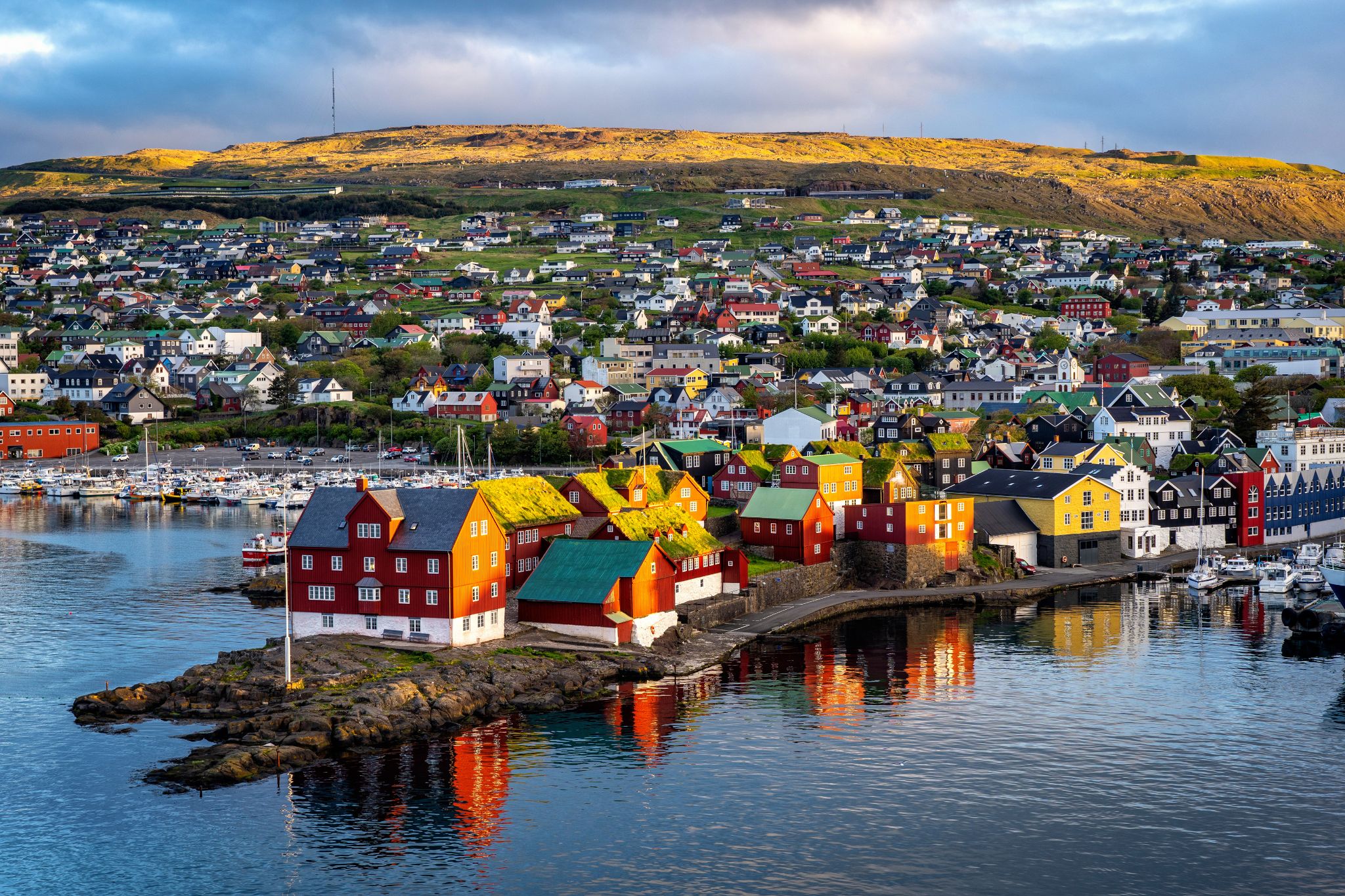
Tórshavn is the capital and largest town of the Faroe Islands. Tórshavn is in the southern part on the east coast of Streymoy. To the northwest of the city lies the 347-meter-high (1,138 ft) mountain Húsareyn, and to the southwest, the 350-meter-high (1,150 ft) Kirkjubøreyn. They are separated by the Sandá River. The town proper has a population of 13,089 (2017), and the greater urban area a population of 21,000.
The Norse established their parliament on the Tinganes peninsula in AD 850.[3] Tórshavn thus became the capital of the Faroe Islands and has remained so ever since. All through the Middle Ages the narrow peninsula jutting out into the sea made up the main part of Tórshavn. Early on, Tórshavn became the centre of the islands' trade monopoly, thereby being the only legal place for the islanders to sell and buy goods. In 1856, the trade monopoly was abolished and the islands were left open to free trade.





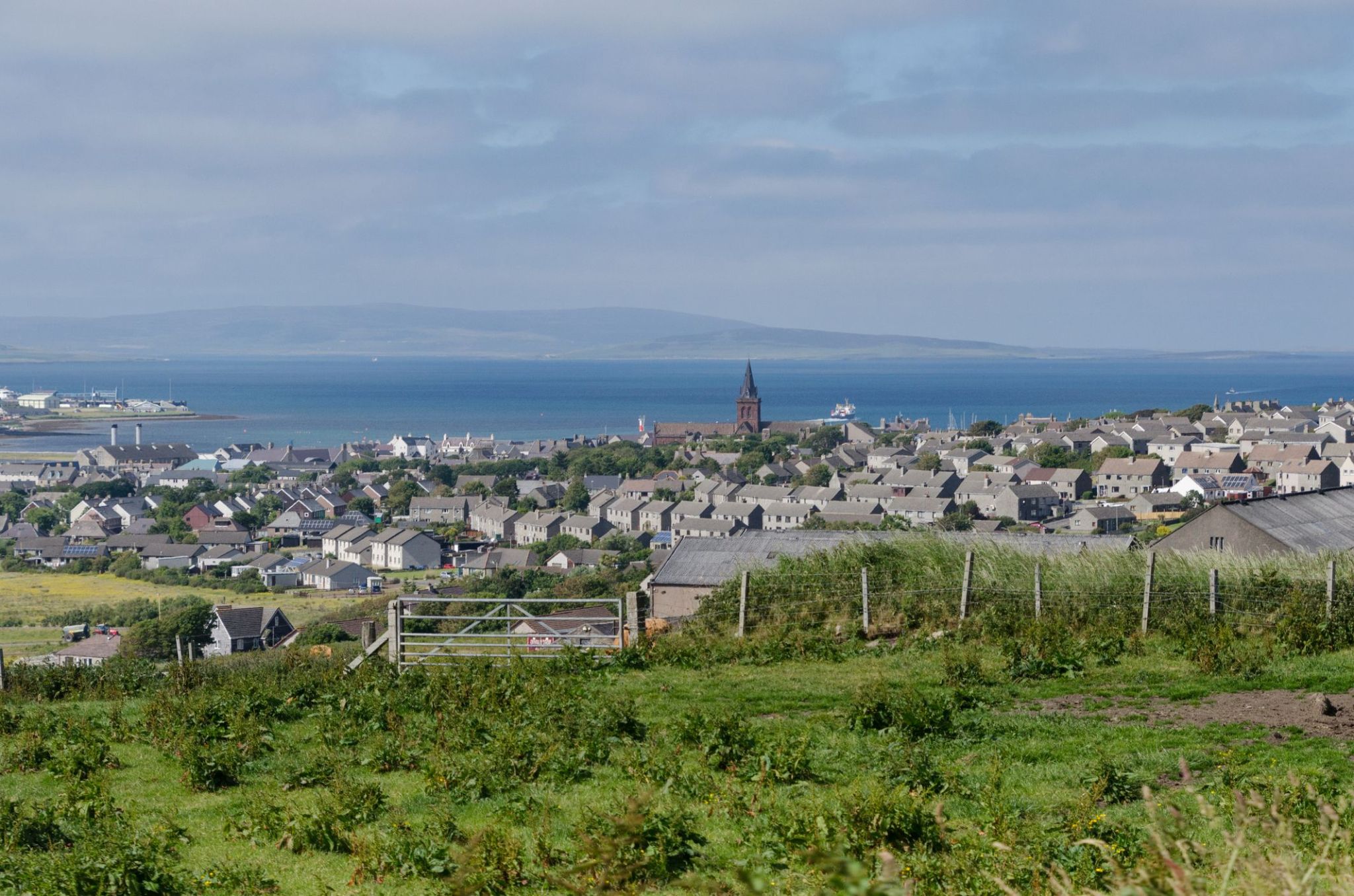
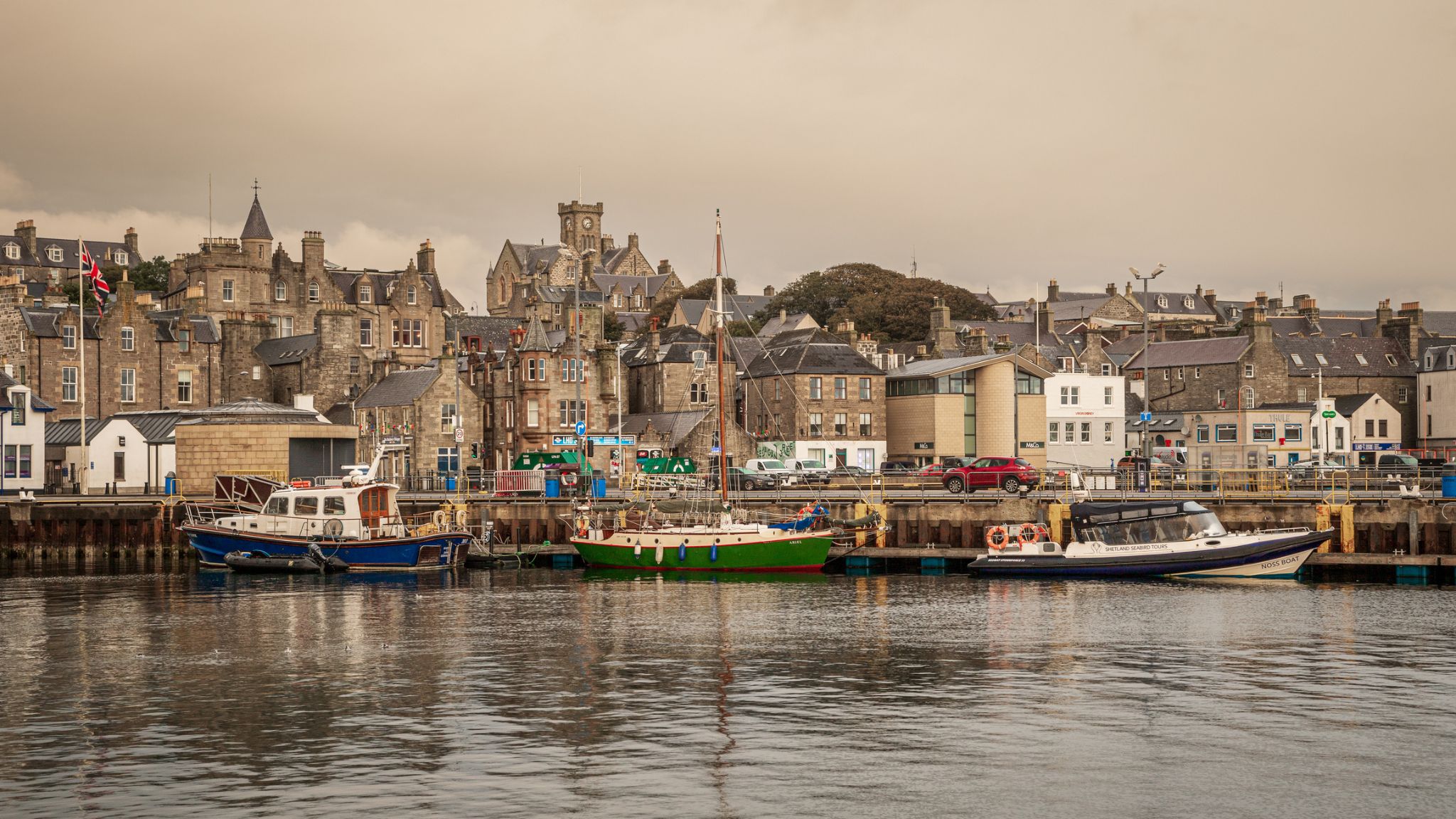
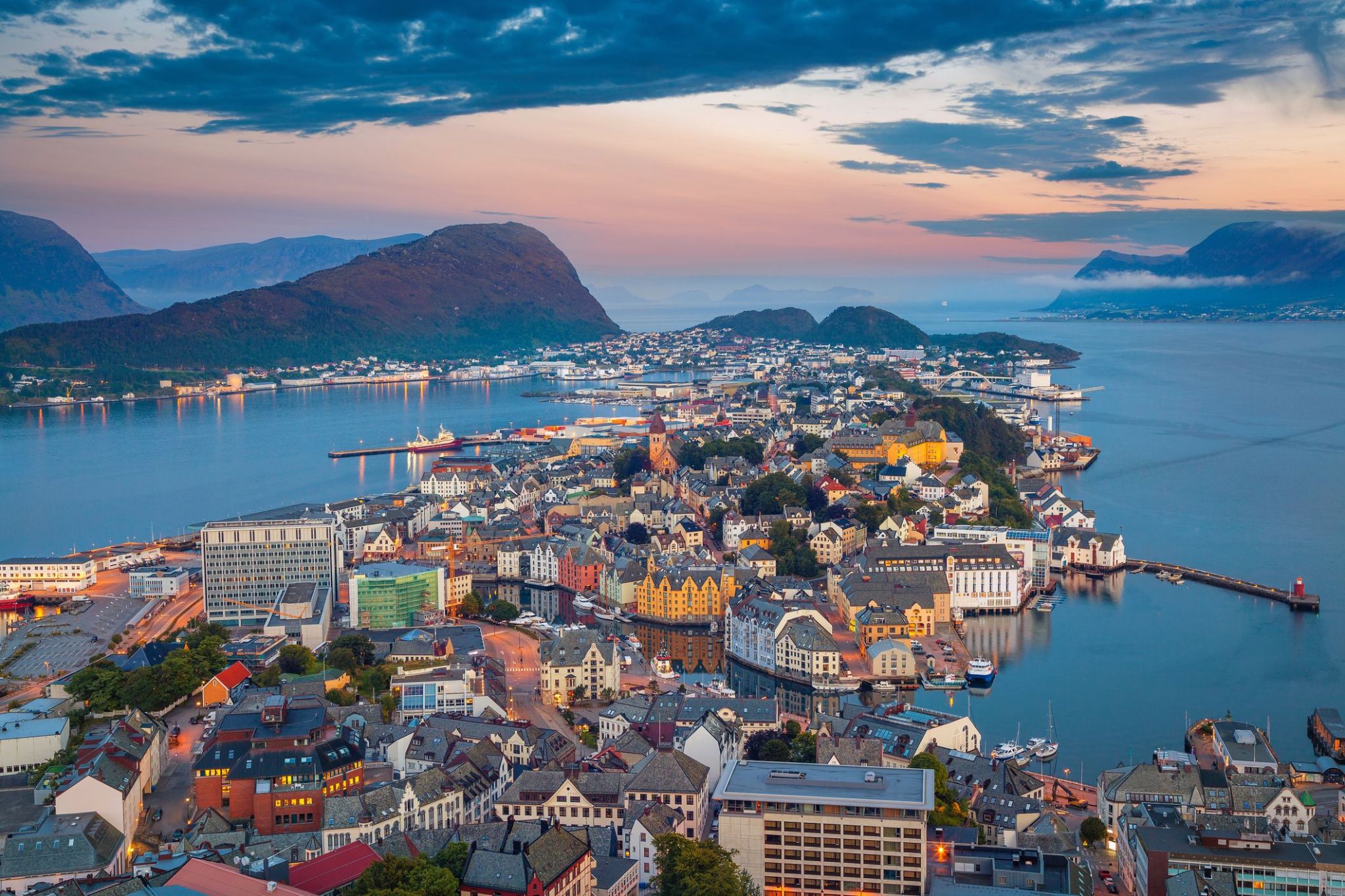
Nestled between majestic fjords and the open sea, Ålesund captivates visitors with its unique blend of natural beauty and distinctive architecture. Known for its stunning Art Nouveau style, rebuilt after a devastating fire in 1904, the town offers a charming atmosphere where colorful buildings line the waterfront, creating a picturesque setting unlike any other in Norway.
Adventurers and culture lovers alike find plenty to enjoy in Ålesund. From hiking up the viewpoint at Aksla Hill for panoramic views of the archipelago to exploring local museums and fresh seafood markets, this coastal town invites travelers to immerse themselves in Norway’s maritime heritage and breathtaking landscapes. Whether cruising the nearby fjords or wandering the narrow streets, every moment in Ålesund promises memorable discoveries.


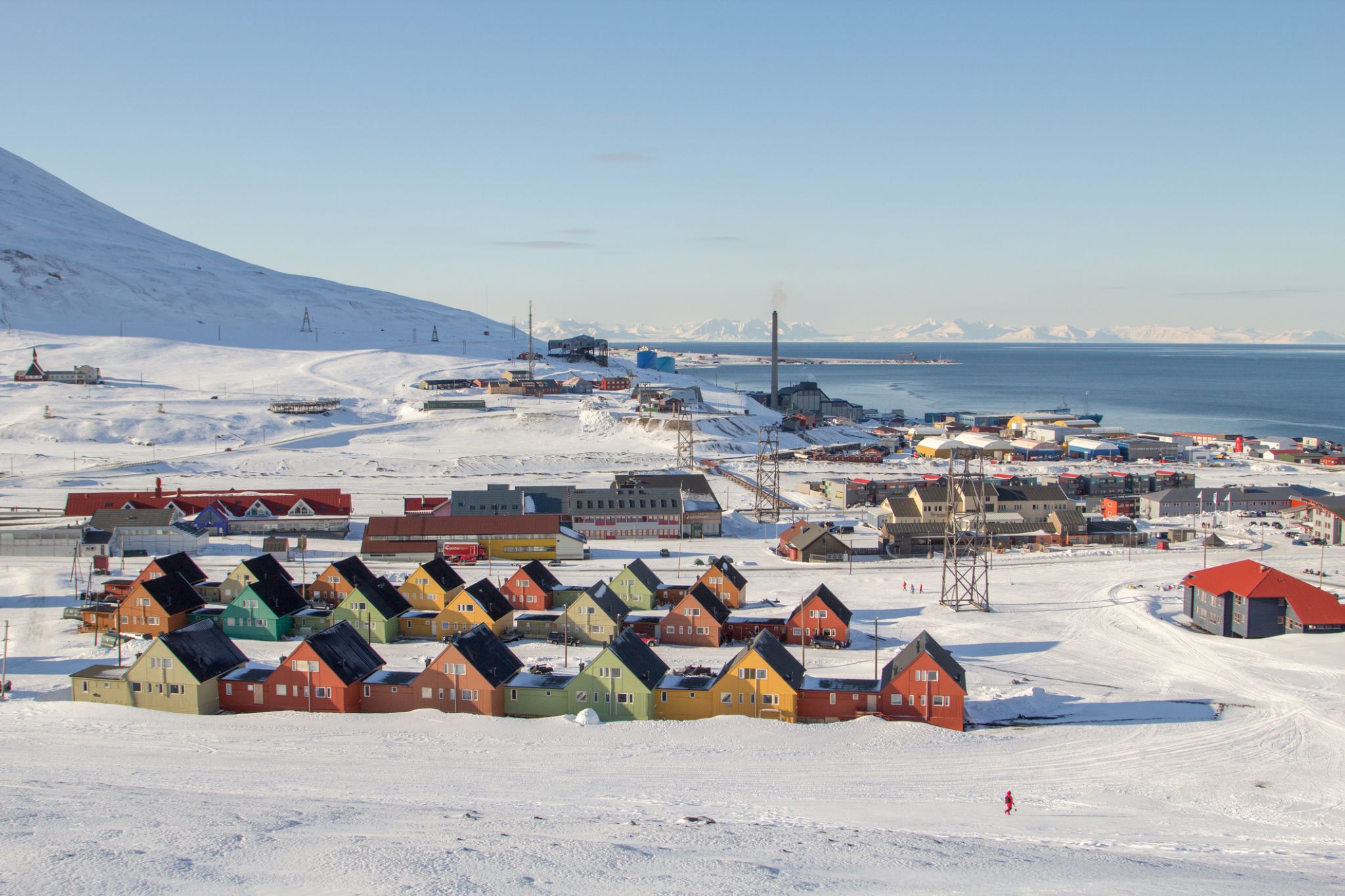

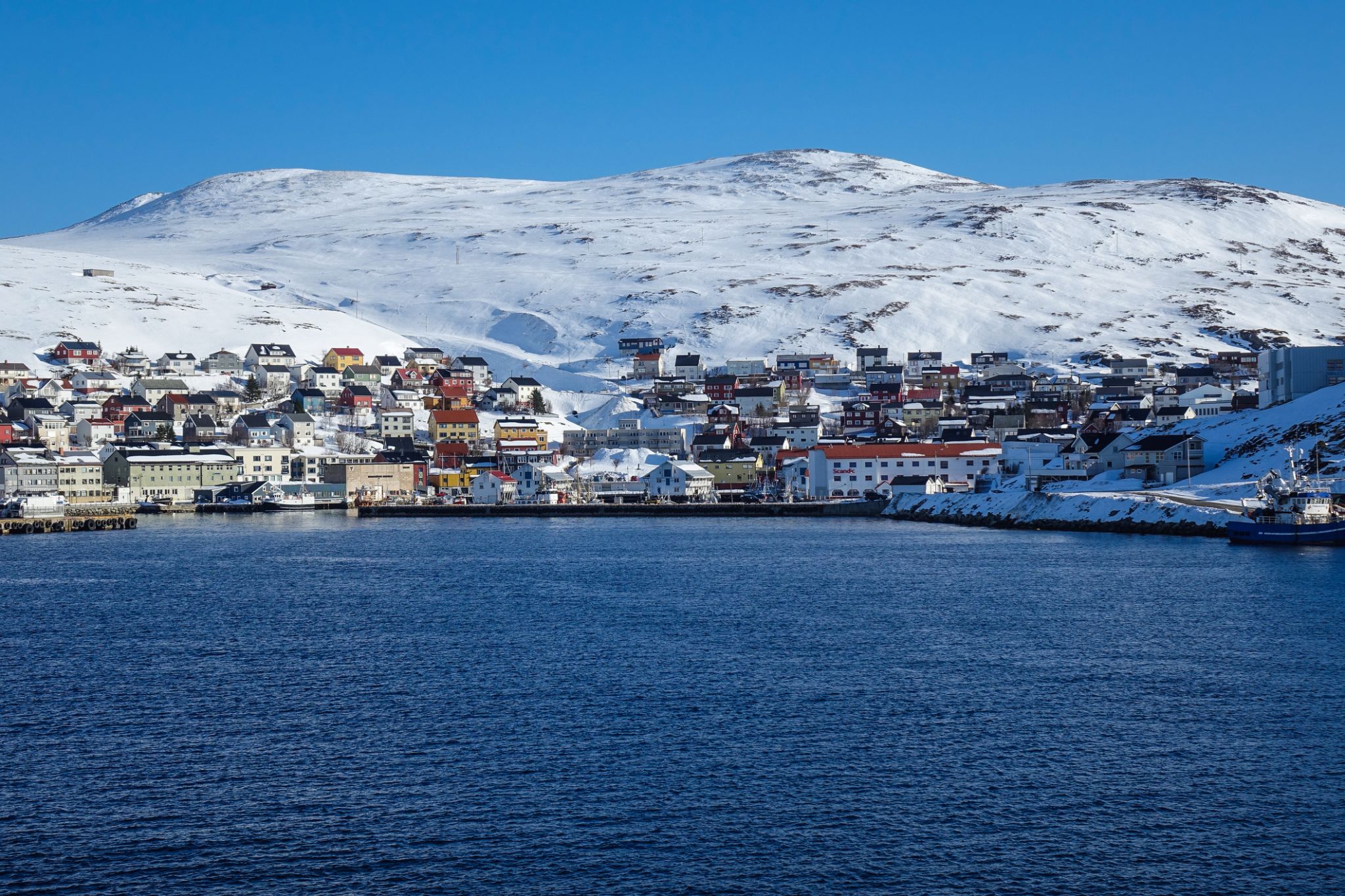
Honningsvåg is the northernmost city in Norway. It is located in Nordkapp Municipality in Finnmark county. Legislation effective in 1997 states that a Norwegian city/town (same word in Norwegian) must have at least 5,000 inhabitants, but Honningsvåg was declared a city in 1996, thus exempt from this legislation, so it is also one of the smallest cities in Norway. The 1.05-square-kilometre (260-acre) town has a population (2017) of 2,484 which gives the town a population density of 2,366 inhabitants per square kilometre (6,130/sq mi).
Honningsvåg is situated at a bay on the southeastern side of the large island of Magerøya, while the famous North Cape and its visitor center is on the northern side of the island. Honningsvåg is a port of call for cruise ships, especially in the summer months. The ice-free ocean (southwestern part of the Barents Sea) provides rich fisheries and tourism is also important to the town. Even at 71°N, many private gardens in Honningsvåg have trees, although rarely more than 3 to 4 metres (9.8 to 13.1 ft) tall.
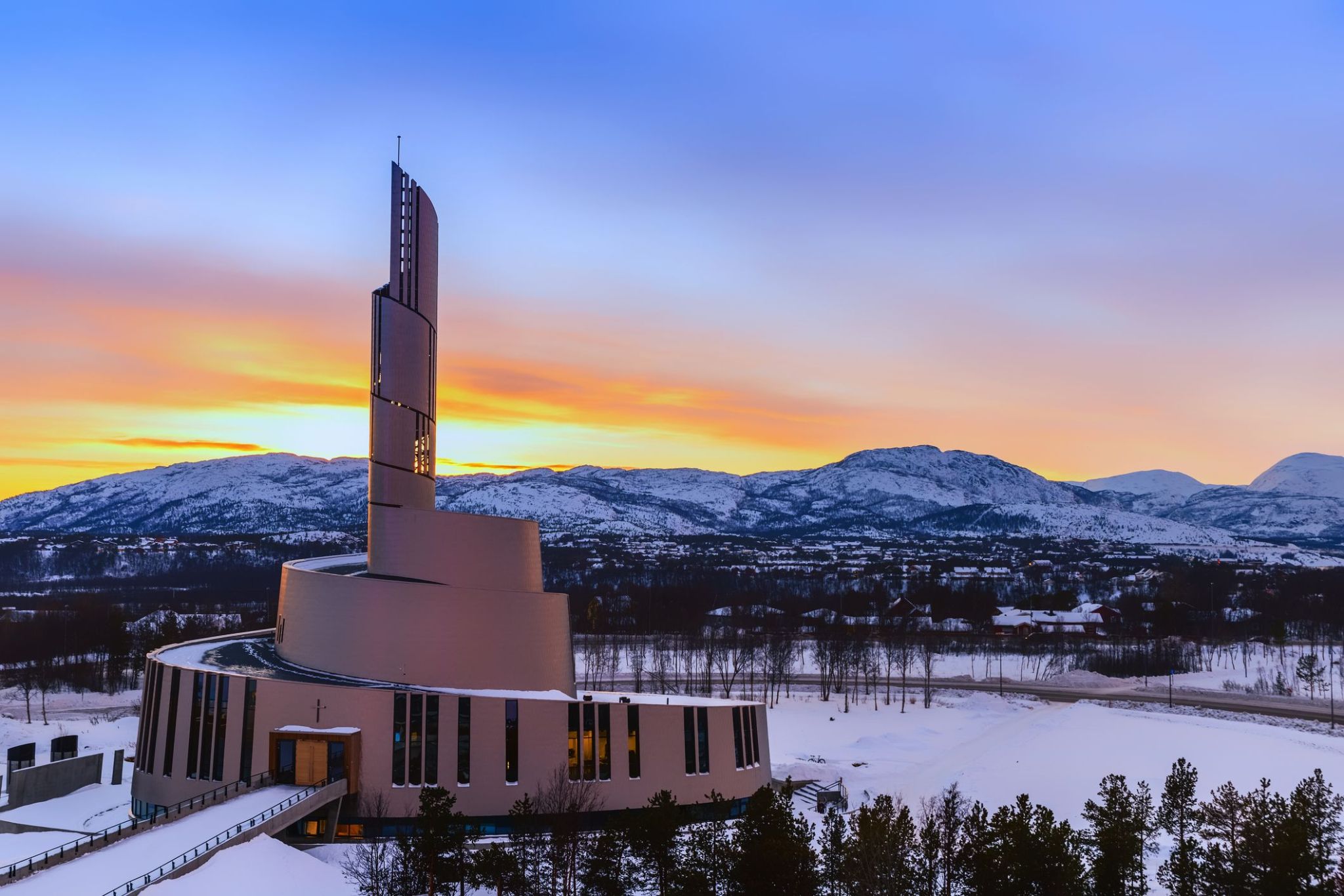
Immersed in the atmosphere of the majestic North, Alta in Norway offers a unique combination of wilderness, cultural heritage, and Arctic serenity. This town in the Finnmark region is famous for its ancient rock carvings, listed as a UNESCO World Heritage Site, and for being one of the best places in the country to witness the dazzling Northern Lights. Alta is also a gateway to Arctic plateau expeditions and unforgettable tours through icy caves and snowy forests.
Alta is not only a land of natural wonders but also a center of modern Arctic life, where Sámi traditions blend harmoniously with Norwegian innovation. Visitors can experience the famous Sorrisniva Igloo Hotel, taste Arctic fish stew, or ride a dog sled. In every season, the town welcomes travelers to rediscover the North—with warmth, hospitality, and unforgettable polar adventures.

Between fjords and green hills, Harstad in northern Norway delights visitors with a cozy city atmosphere and impressive Arctic landscapes. The city is known as the “music capital of Northern Norway” thanks to the annual Northern Norway Festival, which fills the streets with music and creative energy. Here you can stroll along the picturesque waterfront, watch fishing boats in the harbor, and enjoy views of the fjords where sea eagles are often seen.
Visitors to Harstad can discover the northern coast by going kayaking or taking a sea cruise to feel a true closeness to nature. Nearby is the historic Trøndelag center and the ruins of the oldest church in Northern Norway – Trondenes, where you can touch the history of the Vikings. This place offers peace, inspiration, and the true beauty of Norway’s Arctic north.

Situated on the picturesque coast of Northern Norway, this city attracts travelers with its unique nature and vibrant cultural life. Bodø is an important port and gateway to the Arctic, where visitors can enjoy breathtaking views of fjords and mountains, as well as witness one of the most impressive natural phenomena — the Northern Lights.
In Bodø, everyone will find something to their taste: from outdoor activities like hiking, fishing, and boating to exploring local history in museums and contemporary art spaces. The city is also famous for its proximity to the Saltfjellet Nature Reserve and Rondane National Park, making it an excellent starting point for exploring northern landscapes.

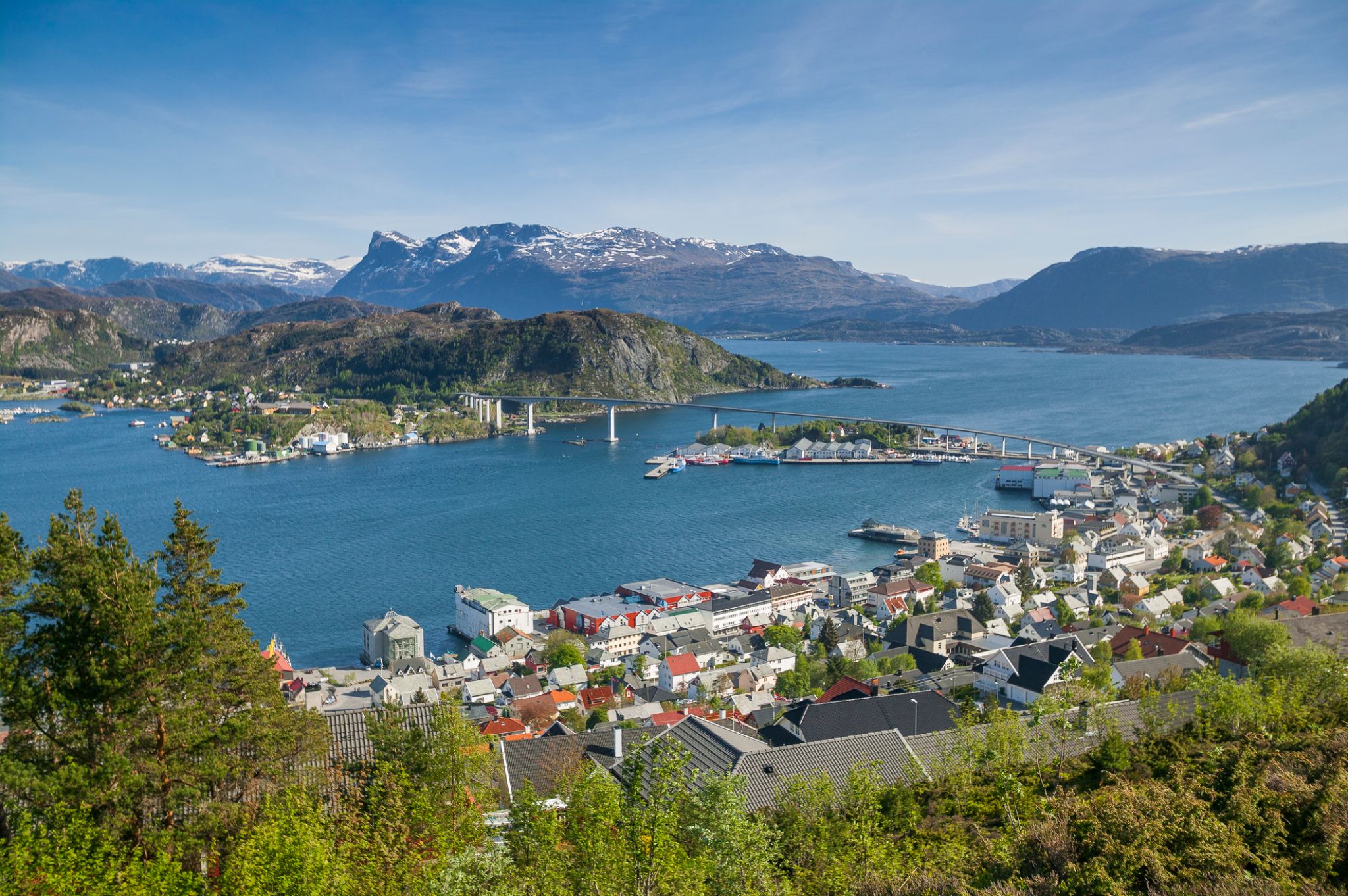






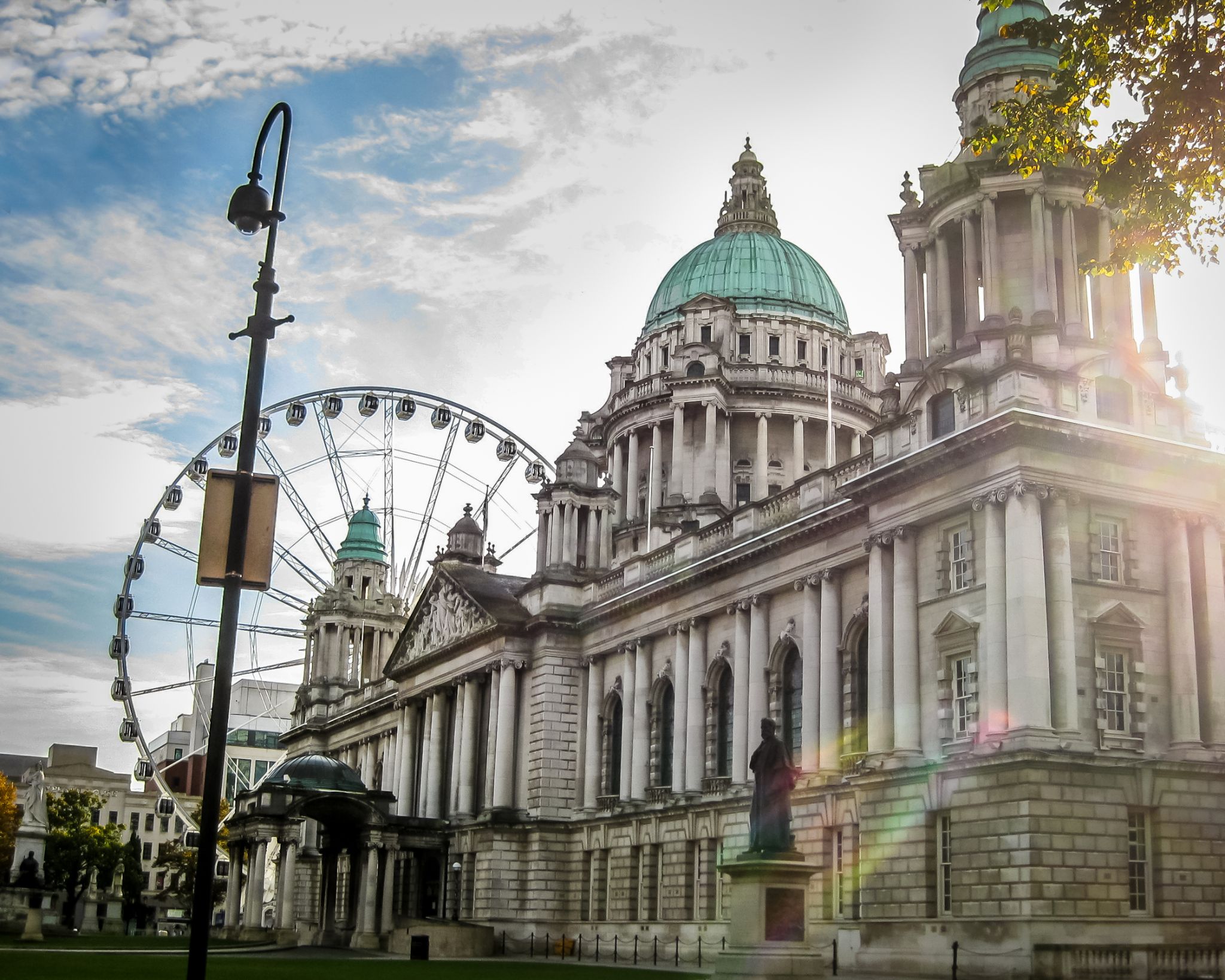
Belfast is a port city in the United Kingdom and the capital city of Northern Ireland, on the banks of the River Lagan on the east coast of Ireland. It is the largest city in Northern Ireland and second largest on the island of Ireland. It had a population of 333,871 in 2015.
By the early 1800s Belfast was a major port. It played a key role in the Industrial Revolution, becoming the biggest linen producer in the world, earning it the nickname "Linenopolis". By the time it was granted city status in 1888, it was a major centre of Irish linen production, tobacco-processing and rope-making. Shipbuilding was also a key industry; the Harland and Wolff shipyard, where the RMS Titanic was built, was the world's biggest shipyard. It also has a major aerospace and missiles industry. Industrialisation and the inward migration it brought made Belfast Ireland's biggest city and it became the capital of Northern Ireland following the Partition of Ireland in 1922. Its status as a global industrial centre ended in the decades after the Second World War.
Belfast suffered greatly in the Troubles, and in the 1970s and 1980s was one of the world's most dangerous cities. However, the city is now considered to be one of the safest within the United Kingdom. Throughout the 21st century, the city has seen a sustained period of calm, free from the intense political violence of former years and has benefitted from substantial economic and commercial growth. Belfast remains a centre for industry, as well as the arts, higher education, business, and law, and is the economic engine of Northern Ireland. Belfast is still a major port, with commercial and industrial docks dominating the Belfast Lough shoreline, including the Harland and Wolff shipyard. It is served by two airports: George Best Belfast City Airport, and Belfast International Airport 15 miles (24 km) west of the city. It is listed by the Globalization and World Cities Research Network (GaWC) as a Gamma global city.

Douglas is the capital and largest city of the Isle of Man, located in the Irish Sea. The city, rich in maritime history, is known for its picturesque coastal scenery and charming atmosphere. In Douglas, you can take a stroll along the historic promenade, lined with old buildings and modern cafes, and visit the local museum that showcases the island's maritime culture and traditions. The city is also famous for its architectural landmarks, such as the castle and historic Victorian buildings, which add to its unique charm.
The surrounding areas of Douglas offer excellent opportunities for outdoor activities, including hiking trails, coastal walks, and bike tours. The Isle of Man is renowned for its unique nature, and travelers can enjoy views of hills, scenic bays, and traditional villages along the way. This corner of Britain attracts tourists with its unique culture, ancient traditions, and beautiful natural landscapes, making it a perfect spot for a relaxing getaway and exciting exploration.
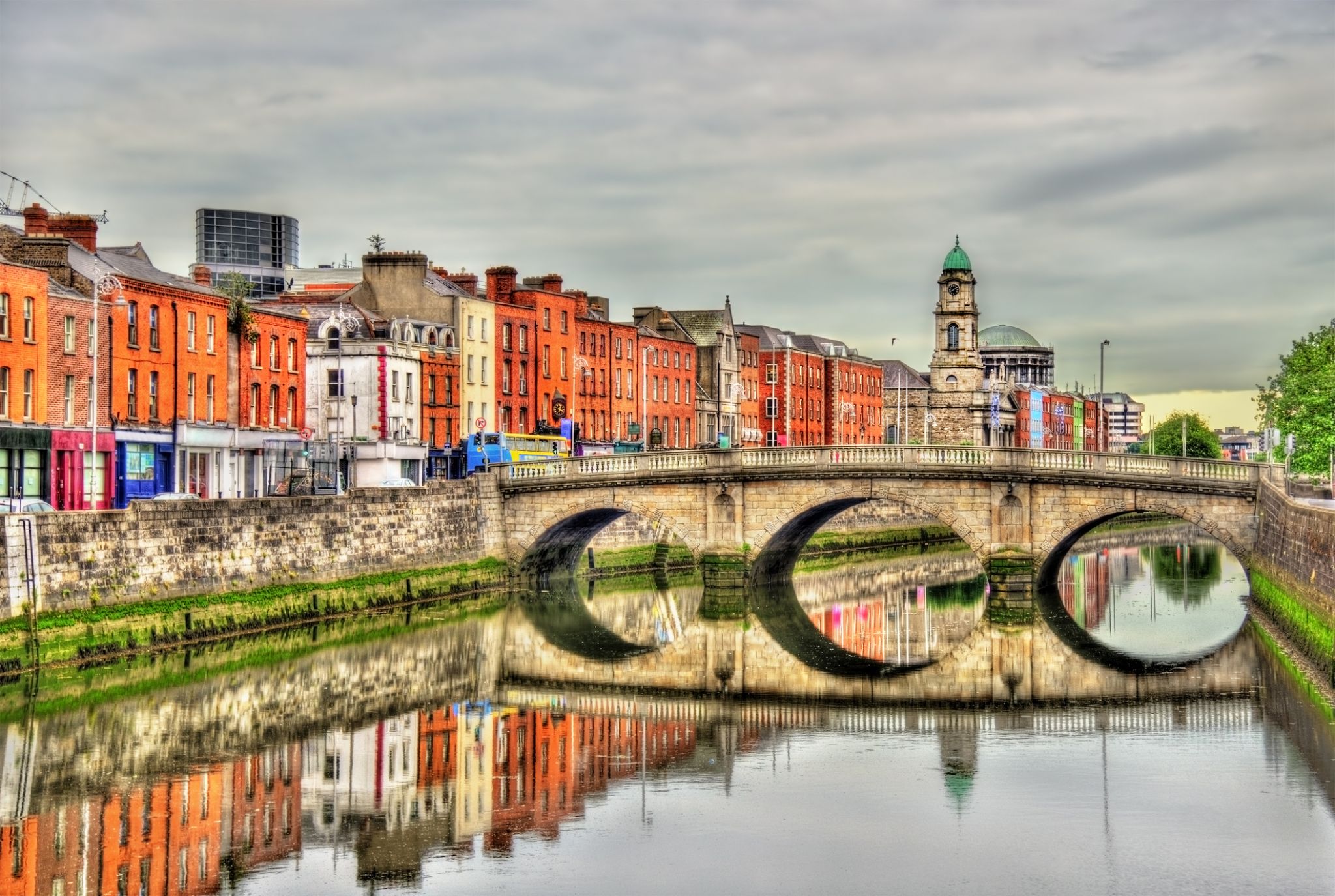
Dublin is the capital of, and largest city in, Ireland. It is on the east coast of Ireland, in the province of Leinster, at the mouth of the River Liffey, and is bordered on the south by the Wicklow mountains. It has an urban area population of 1,173,179, while the population of the Dublin Region (formerly County Dublin), as of 2016, was 1,347,359, and the population of the Greater Dublin area was 1,904,806.
There is archaeological debate regarding precisely where Dublin was established by Celtic-speaking people in the 7th century AD. Later expanded as a Viking settlement, the Kingdom of Dublin, the city became Ireland's principal settlement following the Norman invasion. The city expanded rapidly from the 17th century and was briefly the second largest city in the British Empire before the Acts of Union in 1800. Following the partition of Ireland in 1922, Dublin became the capital of the Irish Free State, later renamed Ireland.
Dublin is a historical and contemporary centre for education, the arts, administration and industry. As of 2018 the city was listed by the Globalization and World Cities Research Network (GaWC) as a global city, with a ranking of "Alpha -", which places it amongst the top thirty cities in the world.


the capital of France, on the Seine River; population 2,203,817 (2006). Paris was held by the Romans, who called it Lutetia, and by the Franks, and was established as the capital in 987 under Hugh Capet. It was organized into three parts—the Île de la Cité (an island in the Seine), the Right Bank, and the Left Bank—during the reign of Philippe-Auguste 1180–1223. The city's neoclassical architecture dates from the modernization of the Napoleonic era, which continued under Napoleon III, when the bridges and boulevards of the modern city were built.
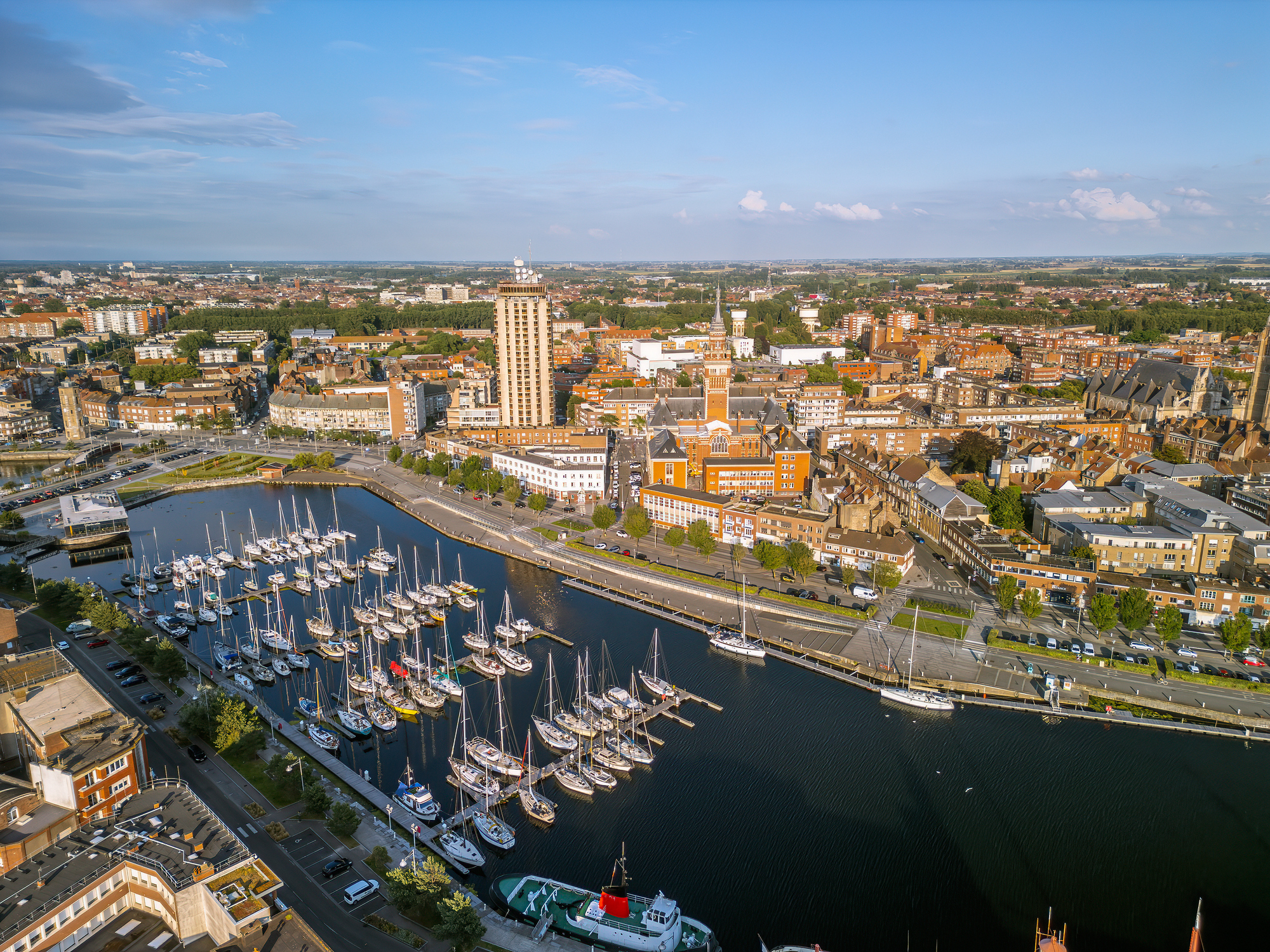

Antwerp is a city and a municipality in the Flemish Region of Belgium. It is the capital and largest city of Antwerp Province, and the third-largest city in Belgium by area at 208.22 km2 (80.39 sq mi), after Tournai and Couvin. With a population of 565,039, it is the most populous municipality in Belgium, and with a metropolitan population of over 1.2 million people, the country's second-largest metropolitan area after Brussels.

Antwerp is a city and a municipality in the Flemish Region of Belgium. It is the capital and largest city of Antwerp Province, and the third-largest city in Belgium by area at 208.22 km2 (80.39 sq mi), after Tournai and Couvin. With a population of 565,039, it is the most populous municipality in Belgium, and with a metropolitan population of over 1.2 million people, the country's second-largest metropolitan area after Brussels.


the capital of France, on the Seine River; population 2,203,817 (2006). Paris was held by the Romans, who called it Lutetia, and by the Franks, and was established as the capital in 987 under Hugh Capet. It was organized into three parts—the Île de la Cité (an island in the Seine), the Right Bank, and the Left Bank—during the reign of Philippe-Auguste 1180–1223. The city's neoclassical architecture dates from the modernization of the Napoleonic era, which continued under Napoleon III, when the bridges and boulevards of the modern city were built.

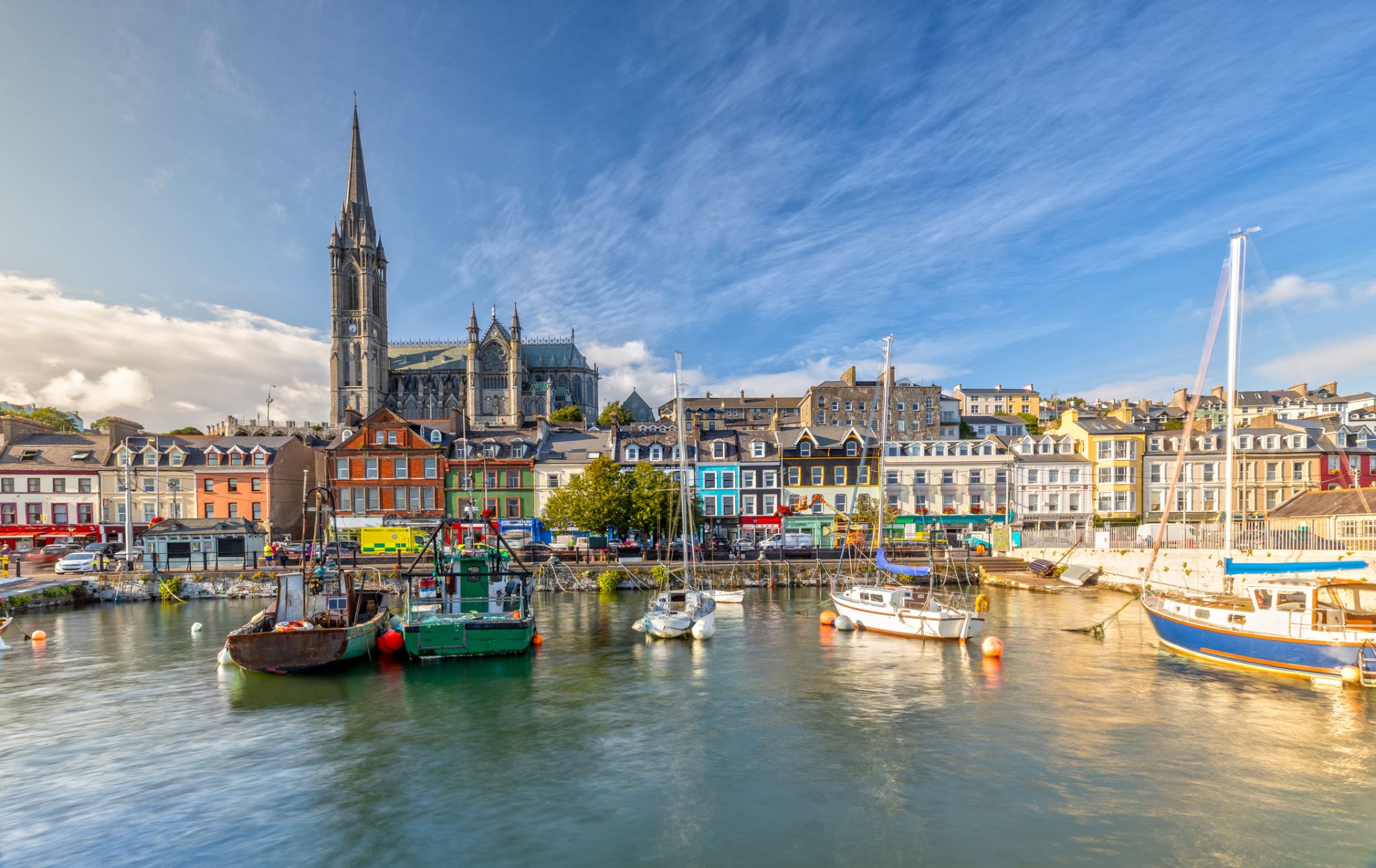
Cork is a city in south-west Ireland, in the province of Munster, which had a population of 125,657 in 2016.
The city is on the River Lee which splits into two channels at the western end and divides the city centre into islands. They reconverge at the eastern end where the quays and docks along the river banks lead outwards towards Lough Mahon and Cork Harbour, one of the largest natural harbours in the world.
Expanded by Viking invaders around 915, the city's charter was granted by Prince John, as Lord of Ireland, in 1185. Cork city was once fully walled, and the remnants of the old medieval town centre can be found around South and North Main streets.
The third largest city on the island of Ireland, the city's cognomen of "the rebel city" originates in its support for the Yorkist cause in the Wars of the Roses. Corkonians often refer to the city as "the real capital", a reference to its opposition to the Anglo-Irish Treaty in the Irish Civil War.

Dublin is the capital of, and largest city in, Ireland. It is on the east coast of Ireland, in the province of Leinster, at the mouth of the River Liffey, and is bordered on the south by the Wicklow mountains. It has an urban area population of 1,173,179, while the population of the Dublin Region (formerly County Dublin), as of 2016, was 1,347,359, and the population of the Greater Dublin area was 1,904,806.
There is archaeological debate regarding precisely where Dublin was established by Celtic-speaking people in the 7th century AD. Later expanded as a Viking settlement, the Kingdom of Dublin, the city became Ireland's principal settlement following the Norman invasion. The city expanded rapidly from the 17th century and was briefly the second largest city in the British Empire before the Acts of Union in 1800. Following the partition of Ireland in 1922, Dublin became the capital of the Irish Free State, later renamed Ireland.
Dublin is a historical and contemporary centre for education, the arts, administration and industry. As of 2018 the city was listed by the Globalization and World Cities Research Network (GaWC) as a global city, with a ranking of "Alpha -", which places it amongst the top thirty cities in the world.

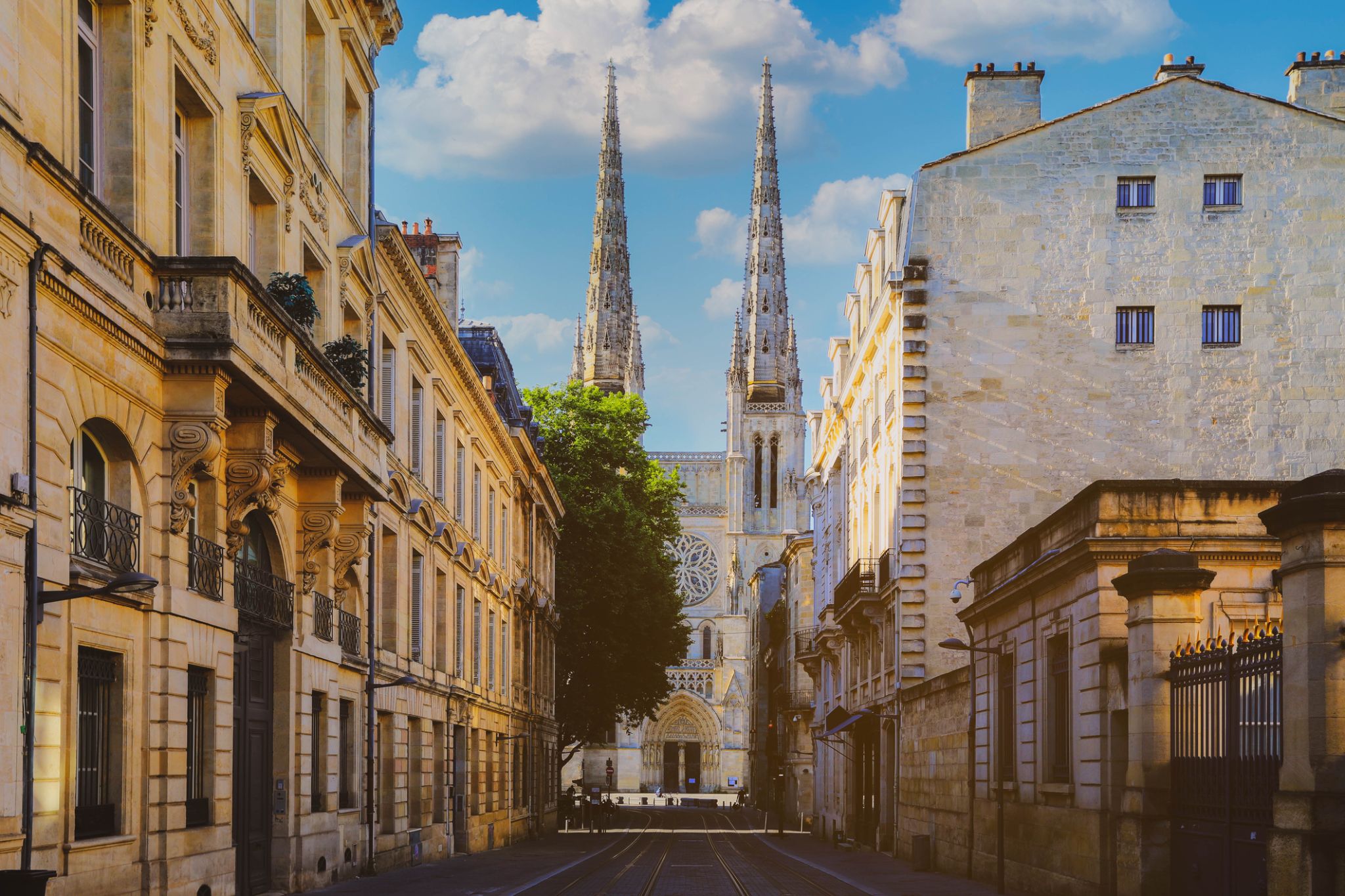
Bordeaux is a port city on the Garonne in the Gironde department in Southwestern France.
The municipality (commune) of Bordeaux proper has a population of 246,586 (2014). Together with its suburbs and satellite towns, Bordeaux is the centre of the Bordeaux Métropole. With 1,195,335 in the metropolitan area, it is the sixth-largest in France, after Paris, Marseille, Lyon, Toulouse, and Lille. It is the capital of the Nouvelle-Aquitaineregion, as well as the prefecture of the Gironde department. Its inhabitants are called "Bordelais" (for men) or "Bordelaises" (women). The term "Bordelais" may also refer to the city and its surrounding region.
Being at the center of a major wine-growing and wine-producing region, Bordeaux remains a prominent powerhouse and exercises significant influence on the world wine industry although no wine production is conducted within the city limits. It is home to the world's main wine fair, Vinexpo, and the wine economy in the metro area takes in 14.5 billion euros each year. Bordeaux wine has been produced in the region since the 8th century. The historic part of the city is on the UNESCO World Heritage List as "an outstanding urban and architectural ensemble" of the 18th century.[7] After Paris, Bordeaux has the highest number of preserved historical buildings of any city in France.

Bordeaux is a port city on the Garonne in the Gironde department in Southwestern France.
The municipality (commune) of Bordeaux proper has a population of 246,586 (2014). Together with its suburbs and satellite towns, Bordeaux is the centre of the Bordeaux Métropole. With 1,195,335 in the metropolitan area, it is the sixth-largest in France, after Paris, Marseille, Lyon, Toulouse, and Lille. It is the capital of the Nouvelle-Aquitaineregion, as well as the prefecture of the Gironde department. Its inhabitants are called "Bordelais" (for men) or "Bordelaises" (women). The term "Bordelais" may also refer to the city and its surrounding region.
Being at the center of a major wine-growing and wine-producing region, Bordeaux remains a prominent powerhouse and exercises significant influence on the world wine industry although no wine production is conducted within the city limits. It is home to the world's main wine fair, Vinexpo, and the wine economy in the metro area takes in 14.5 billion euros each year. Bordeaux wine has been produced in the region since the 8th century. The historic part of the city is on the UNESCO World Heritage List as "an outstanding urban and architectural ensemble" of the 18th century.[7] After Paris, Bordeaux has the highest number of preserved historical buildings of any city in France.



Along the scenic coast of the Bay of Biscay in the Spanish region of Asturias lies the charming city of Gijon, captivating visitors with its unique blend of culture, nature, and gastronomy. Here, you can enjoy walks along the picturesque San Lorenzo beaches, visit numerous contemporary art museums, and taste the famous Asturian cider in traditional “chigres.”
Gijon is the perfect destination for those who appreciate a mix of history and modern life. Beyond its beautiful beaches and cozy streets, the city is known for lively festivals like the Sea Festival and Song Festival, which add vibrant colors to any trip. For active travelers, there are various water sports and hiking routes that reveal breathtaking coastal views.


Lisbon is the capital and the largest city of Portugal, with an estimated population of 505,526 within its administrative limits in an area of 100.05 km2. Its urban area extends beyond the city's administrative limits with a population of around 2.8 million people, being the 11th-most populous urban area in the European Union. About 3 million people live in the Lisbon Metropolitan Area (which represents approximately 27% of the country's population). It is mainland Europe's westernmost capital city and the only one along the Atlantic coast. Lisbon lies in the western Iberian Peninsula on the Atlantic Ocean and the River Tagus. The westernmost areas of its metro area form the westernmost point of Continental Europe, which is known as Cabo da Roca, located in the Sintra Mountains.